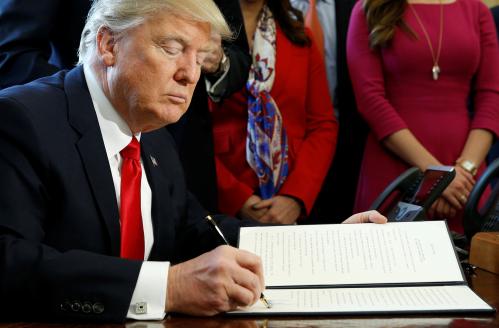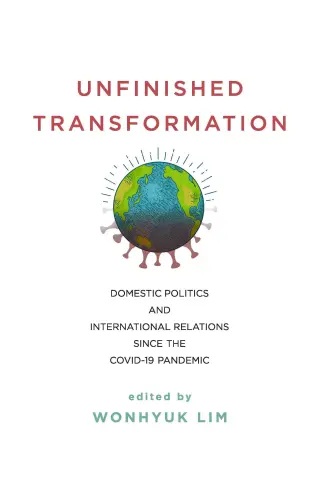This report is part of the Series on Financial Markets and Regulation and was produced by the Brookings Center on Regulation and Markets.
Our active engagement, working alongside our clients and government agencies, during the Financial Crisis of 2008 convinced us that an effective resolution structure for financial institutions is critical to prevent and mitigate future crises. Some are now calling for the repeal of the law that Congress enacted to help accomplish this objective – Title II of the Dodd-Frank Wall Street Reform and Consumer Protection Act, which supplemented the Bankruptcy Code insolvency regime with a special orderly liquidation authority. Although Title II is not without its flaws, we would propose an alternative approach to modify, rather than repeal, Title II to respond to legitimate concerns that have been raised.
Our approach would maximize the flexibility required to respond to financial crises, which are inherently unpredictable in both cause and potential effect, as well as balancing multiple relevant considerations. It is designed to contain the risk of another financial crisis by bringing to bear maximum expertise and providing for expeditious implementation; avoid competitive advantage based on size; treat creditors fairly but without special advantage; and assure that “too big to fail” will not be the default government strategy. It would also advance Congress’ basic principle that stockholders, creditors, and systemically significant financial services companies generally – and not taxpayers – bear the losses and risks resulting from the failure of any of these companies. Title II carries stiff consequences for companies ultimately subject to its provisions, including seeing shareholders wiped out, management replaced, and creditors sustain the losses.
A principal cause of both the Financial Crisis of 2008 and the government’s “too-big-to-fail” response was the absence of an effective resolution framework for major financial service companies. Although Congress has previously established or endorsed specialized resolution regimes for banks, broker-dealers and insurers, there was no similar structure for the holding companies for these institutions. As a consequence, inconsistent approaches by government authorities for individual companies produced confusion, perceptions of fundamental unfairness and, ultimately, systemic consequences to the industry and the economy, as well as taxpayer exposure. The Lehman insolvency demonstrated that, at least in a time of financial crisis, the current version of the Bankruptcy Code is unlikely to be effective.
Although Title II was adopted to avoid these consequences, Congress made clear that Title II was to be reserved for truly extraordinary circumstances, with the Bankruptcy Code remaining as the resolution mechanism for financial services companies in all other situations. Title II’s use requires the approval of a diverse group of experts, including the Federal Reserve, the FDIC, and the Treasury Secretary, which includes a determination that the Bankruptcy Code would not provide an effective resolution of the failing institution.
This is why we believe a total repeal of Title II would not be the best course. Instead, we believe that the country’s financial system, and the broader economy, would be best protected by both retaining the unique capabilities of Title II and adopting a new chapter of the Bankruptcy Code for dealing with the vast majority of financial service company failures that do not require extraordinary measures. Each of Title II and the Bankruptcy Code has special attributes, not possessed by the other, that could be best suited for different situations. History demonstrates that flexibility within defined statutory parameters is essential to respond most effectively to unanticipatable financial crises.
At the same time, Title II should be amended to respond to three basic and legitimate concerns about its implementation. The first is that the administration of claims would be conducted in a non-transparent and potentially arbitrary way by the FDIC without the protections, expertise, and established norms of the judicial system. To address this concern we propose that claims against the estate of the failed institution would be administered by the bankruptcy courts, rather than the FDIC, under the substantive and procedural provisions of the Bankruptcy Code with which creditors are familiar and comfortable.
The second concern is that the government and taxpayers could be exposed to loss in respect of the Title II liquidity fund, which is designed to protect against systemic consequences. Title II already contains substantial precautions to assure against risk of government loss and taxpayer exposure as a result of advances from the fund, including requiring plausible repayment plans approved by the Secretary of the Treasury and the FDIC, limiting advances to 90 percent of the fair value of the assets of the failed company, granting the government high priority in the claims process for reimbursement of any advances and reimbursing advances through assessments on other large financial services companies if they cannot be repaid from the assets of the failed company. To provide even greater assurance of the availability of repayment resources, we propose limiting the borrowing base for advances by applying a sharp additional discount from the current 90 percent of fair value. A reference point could be the “over-collateralization” requirements established by Congress for affiliate lending, which range from 10 to 30 percent depending upon asset type.
In addition, the repayment schedule for any advance could be accelerated to a maximum of six months to protect against asset deterioration and the assessment process against other large financial institutions to cover any losses could similarly be accelerated. This approach should also minimize the complex negative Congressional budget scoring for the Title II liquidity fund.
The third concern relates to the government discretion to determine when and whether to initiate a proceeding under Title II. To provide greater certainty and predictability, the terms “in default” and “in danger of default” could be defined to incorporate well-understood Bankruptcy Code concepts. For instance, “in default” would require the occurrence of a condition that would permit a court to grant an involuntary bankruptcy petition. “In danger of default” could require a written, public determination by the FDIC and Federal Reserve, with the concurrence of the Secretary of the Treasury, that a default was more likely than not to occur within 30 days.
Finally, the thoughtful proposals that have been made to add a new chapter of the Bankruptcy Code for financial services companies should be enhanced by requiring the Bankruptcy Court to appoint the Federal Reserve or FDIC as a special master. The special master would act as an objective expert to aid the Bankruptcy Court in considering the complex issues that could arise in the resolution of a large financial services company. This would provide vital expertise and knowledge with respect to both the individual company and the financial system, and help provide confidence to funders and foreign regulators.
Cohen is Senior Chairman of the law firm Sullivan & Cromwell and vice chairman of the Economic Studies Council at Brookings. Wiseman is a partner at the law firm of Sullivan & Cromwell. They did not receive financial support from any firm or person with a financial or political interest in this article although their firm represents clients whose positions may relate to this piece.
The Brookings Institution is committed to quality, independence, and impact.
We are supported by a diverse array of funders. In line with our values and policies, each Brookings publication represents the sole views of its author(s).












